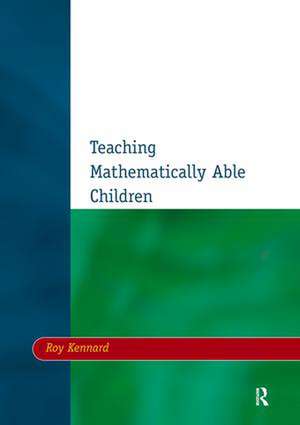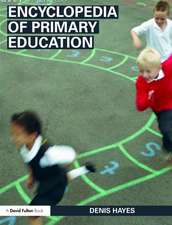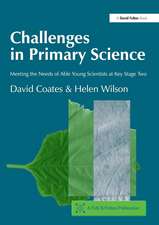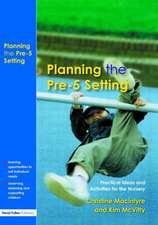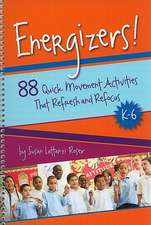Teaching Mathematically Able Children
Autor Roy Kennarden Limba Engleză Hardback – 7 feb 2017
This text also considers whole school organizational and leadership approaches and should be useful to school management teams or "gifted and talented coordinators." This revised and updated second edition should be of interest to teachers, advisers, lecturers and students with an interest in securing effective provision for mathematically able pupils.
| Toate formatele și edițiile | Preț | Express |
|---|---|---|
| Paperback (1) | 105.21 lei 6-8 săpt. | |
| Taylor & Francis – 26 oct 2001 | 105.21 lei 6-8 săpt. | |
| Hardback (1) | 680.73 lei 6-8 săpt. | |
| Taylor & Francis – 7 feb 2017 | 680.73 lei 6-8 săpt. |
Preț: 680.73 lei
Preț vechi: 1027.43 lei
-34% Nou
Puncte Express: 1021
Preț estimativ în valută:
130.25€ • 136.01$ • 107.56£
130.25€ • 136.01$ • 107.56£
Carte tipărită la comandă
Livrare economică 15-29 aprilie
Preluare comenzi: 021 569.72.76
Specificații
ISBN-13: 9781138163836
ISBN-10: 113816383X
Pagini: 96
Dimensiuni: 210 x 297 mm
Greutate: 0.45 kg
Ediția:2
Editura: Taylor & Francis
Colecția Routledge
Locul publicării:Oxford, United Kingdom
ISBN-10: 113816383X
Pagini: 96
Dimensiuni: 210 x 297 mm
Greutate: 0.45 kg
Ediția:2
Editura: Taylor & Francis
Colecția Routledge
Locul publicării:Oxford, United Kingdom
Public țintă
Academic and Professional Practice & DevelopmentNotă biografică
Roy Kennard is Mathematics Adviser, City of Sunderland
Cuprins
Chapter 1 Perspectives on the characteristic mathematical abilities of able children; Chapter 2 Mathematically able children and the National Curriculum; Chapter 3 Pupils' self-perceptions; Chapter 4 Teaching approaches that challenge mathematically able pupils; Chapter 5 Organisational approaches for challenging mathematically able pupils; Chapter 6 Case study 1: Working with able Year 9 pupils; Chapter 7 Case study 2: Industry links; Chapter 8 Case study 3: Working with able Year 6 pupils; Chapter 9 A note on mathematical achievement and gender; Chapter 10 Conclusion; Chapter 11 A note on resources;
